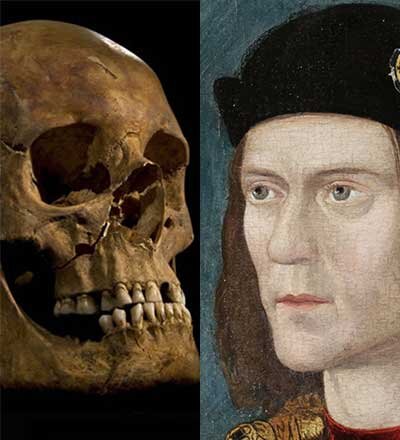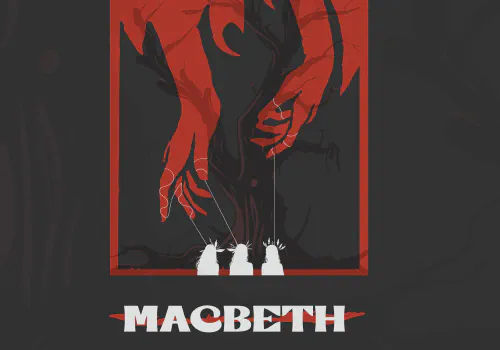The (Recent) History of Richard III

To say that England has had its fair share of infamous monarchs would be an understatement. From Henry VIII (and his many beheaded wives) to Bloody Mary, killer of nearly three hundred Protestants, the British crown of yesteryear conjures up images of greed, corruption, and murder. But none of England’s kings or queens are as notorious as the last of the Plantagenets: sinister Richard III, Britain’s most reviled royal.
After Edward IV died, leaving his son—Edward V—as king, Richard III took over as a regent. Essentially, he would act as king until Edward V was old enough to reign. Richard moved young king Edward and his younger brother into the tower of London— supposedly to prepare Edward for his coronation as king. However, while the boys were in the tower, word got out that the young king and his brother—due to a technicality—were considered illegitimate, and unable to take the throne. So, Richard swooped in and was crowned Richard III of England.
The young princes in the tower disappeared around this time. Whether they were murdered or not is unclear, but many people—Shakespeare included—believe that Richard was responsible for their deaths; he could have been trying to secure his place on the throne. Either way, the idea that Richard could have murdered two young children in his quest for power made many people very upset. Those who had supported Edward V now began to voice their anger at Richard.
A group of these nobles, upset at the way Richard had seized the throne and his possible role in the princes’ deaths, started a rebellion against Richard. One of the rebels, Henry Tudor, gathered troops against Richard at Bosworth Field. In the middle of this battle, Richard III was killed, and Henry Tudor crowned himself Henry VII of England—father to Henry VIII, and grandfather to Elizabeth I.
For centuries, no one was certain what had happened to Richard’s body. He was buried in a crude grave at Greyfriars Friary in Leicester, and when the Church was destroyed by Henry VIII around fifty years later, most people believed that the body had been thrown into the River Soar. A few people believed that his body may have been left underneath the church, but for more than five hundred years, nearly everyone assumed that his corpse had been lost.
However, although Richard was killed and his body lost, people didn’t lose interest in this notorious king. William Shakespeare wrote one of his most masterful plays based on Richard’s life. Shakespeare’s Richard is a heinous monster, up in the ranks of Iago and Macbeth as far as villainy goes. His play has been studied and performed, century after century, and audiences have been fascinated by Richard—both the character and the man.
In 2012, a group of Richard’s biggest fans—led by Philippa Langley, the president of the Scottish branch of the Richard III society—decided that Richard’s body had been lost long enough. It was time to find him. Research showed that the Leicester City Council parking lot had been built over the remains of the Greyfriars Friary, and that there was a chance—a very slim chance—that Richard III’s remains were somewhere under the parking lot.
They began digging, looking for the remains of the building—and in the very first trench they dug, archaeologists discovered a human skeleton. After looking closer, they discovered that the spine was curved, due to scoliosis—much like Shakespeare’s description of Richard the hunchback. They also discovered that the body appeared to have been thrown in unceremoniously, without a coffin or even a shroud. This, too, matched descriptions of Richard’s burial. There were multiple skull injuries and possibly an arrow lodged in his spine—indicating that this person had died in battle.
To prove that the corpse was really Richard’s, the team had to check for a DNA match with a relative. They tracked down a direct descendant of Richard’s older sister and found—to their amazement—that it was a match. The bones found under a parking lot, in the very first place they decided to dig, belonged to Richard III—the last of the Plantagenets. He was reburied in Leicester Cathedral in a ceremony attended by the Archbishop of Canterbury and several members of the royal family.
It’s easy to understand why people are still so interested in Richard III’s story. The history itself is fascinating, and the idea that a king could be so reviled and hated, and yet revered enough to warrant an archaeological dig—is almost Shakespearean in its irony. It’s hard to say, though, if people would be so interested in Richard if it weren’t for Shakespeare’s portrayal. After all, there are plenty of English kings whose bodies have been lost to time. It’s Shakespeare’s immortal words that keep us interested, keep us engaged in the history.
Shakespeare’s Richard III is one of his most powerful plays. The story of a man, consumed by his lust for power, is so chilling—and yet so universal—that it’s no wonder his legacy has lingered all these years. Regardless of the ancient history, and even the recent history, Richard III—the legend, the villain, the king—is immortalized in Shakespeare’s words.









